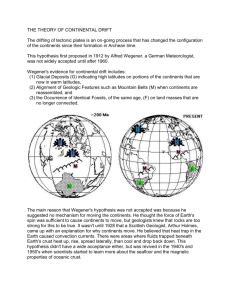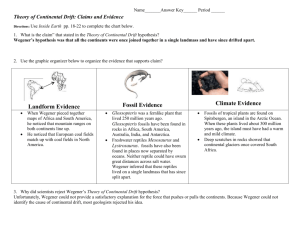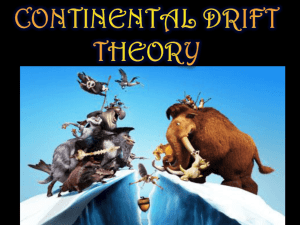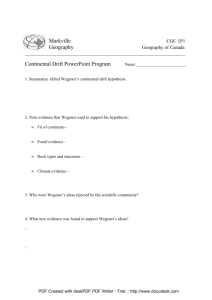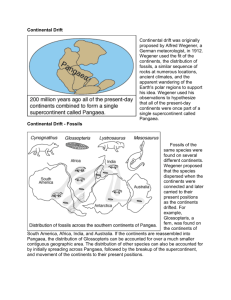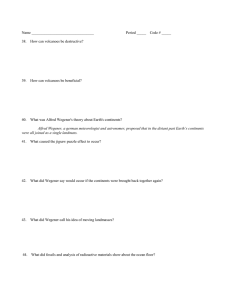Reading for Hypotheses and Theories Name: _____________________
advertisement
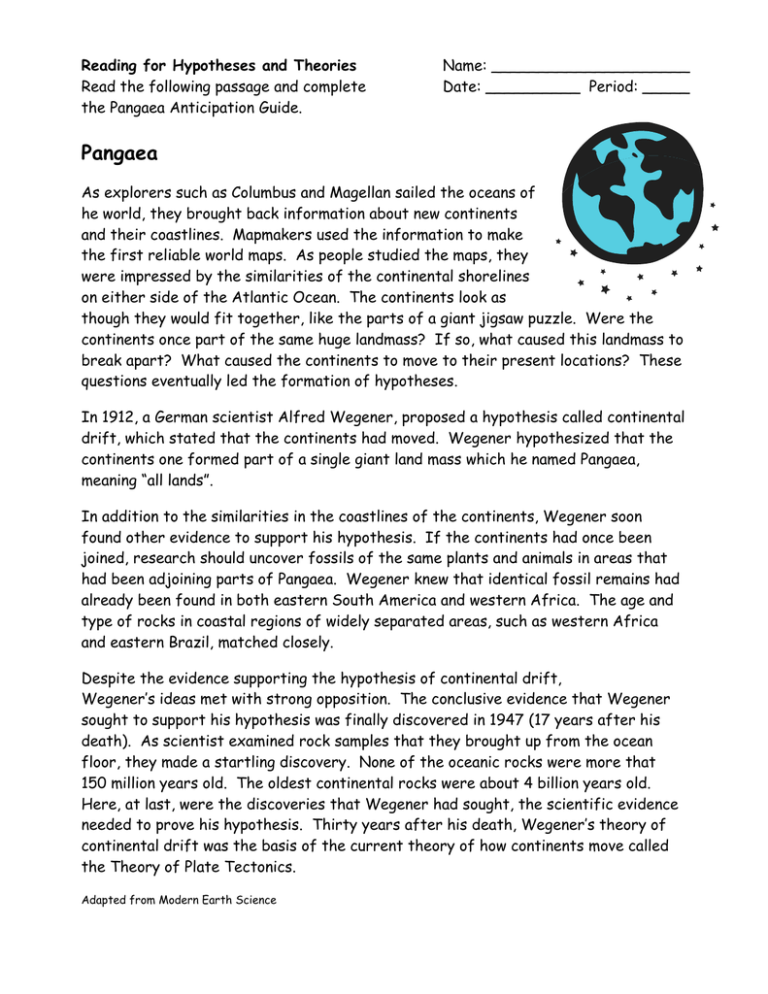
Reading for Hypotheses and Theories Read the following passage and complete the Pangaea Anticipation Guide. Name: _____________________ Date: __________ Period: _____ Pangaea As explorers such as Columbus and Magellan sailed the oceans of he world, they brought back information about new continents and their coastlines. Mapmakers used the information to make the first reliable world maps. As people studied the maps, they were impressed by the similarities of the continental shorelines on either side of the Atlantic Ocean. The continents look as though they would fit together, like the parts of a giant jigsaw puzzle. Were the continents once part of the same huge landmass? If so, what caused this landmass to break apart? What caused the continents to move to their present locations? These questions eventually led the formation of hypotheses. In 1912, a German scientist Alfred Wegener, proposed a hypothesis called continental drift, which stated that the continents had moved. Wegener hypothesized that the continents one formed part of a single giant land mass which he named Pangaea, meaning “all lands”. In addition to the similarities in the coastlines of the continents, Wegener soon found other evidence to support his hypothesis. If the continents had once been joined, research should uncover fossils of the same plants and animals in areas that had been adjoining parts of Pangaea. Wegener knew that identical fossil remains had already been found in both eastern South America and western Africa. The age and type of rocks in coastal regions of widely separated areas, such as western Africa and eastern Brazil, matched closely. Despite the evidence supporting the hypothesis of continental drift, Wegener’s ideas met with strong opposition. The conclusive evidence that Wegener sought to support his hypothesis was finally discovered in 1947 (17 years after his death). As scientist examined rock samples that they brought up from the ocean floor, they made a startling discovery. None of the oceanic rocks were more that 150 million years old. The oldest continental rocks were about 4 billion years old. Here, at last, were the discoveries that Wegener had sought, the scientific evidence needed to prove his hypothesis. Thirty years after his death, Wegener’s theory of continental drift was the basis of the current theory of how continents move called the Theory of Plate Tectonics. Adapted from Modern Earth Science

